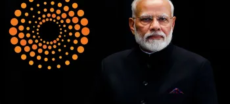[vc_row][vc_column][vc_column_text dp_text_size=”size-4″]For those with the time, desperation, or flexible morals, getting around Windows XP’s activation method has never been too difficult.
Despite being widely reviled from the start, the encrypted algorithm underlying XP activation has never been completely cracked, at least without an internet connection.
However, in this day and age, when Windows XP is no longer relevant, a remedy has surfaced and has been spreading for several months in the dark corners of web forums.
A blog post titled “Windows XP Activation: GAME OVER” on tinyapps.org (first discovered by The Register) recounts the recent history of people attempting to activate Windows XP more than 20 years after its initial release, nine years after its end of life, and, most importantly, several years after Microsoft discontinued its online activation servers (or perhaps they simply switched certificates).
Also Read: Jashn-e-Jaun Elia covers a wide range of genres.
How Does It Work?
The programme xp_activate32.exe, which is only 18,432 bytes in size (its hash can be discovered on tinyapps’ blog post), performs an intriguing purpose. It converts the code generated by Windows XP’s phone activation function into a legitimate activation key known as the Confirmation ID.
What’s fascinating about this process is that it takes place entirely offline. Furthermore, the activation is retained even if the system is cleaned or reinstalled. Surprisingly, it appears to generate the same key that Microsoft would for your computer.
Why Were Previous Tools Not the Same?
There were several programmes available prior to the release of this offline programme for producing keys that Windows XP would recognise. These tools, however, were typically software hacks or decryption tools that used brute force approaches. Although they were accepted locally, they did not pass validation with Microsoft (albeit this is of minor importance in this context).
Another notable tool, WindowsXPKg, was hosted on Microsoft’s own GitHub servers and could produce keys. However, at the time of writing, it appears that the external server required for its operation is no longer operational.
Fortunately, the vast majority of people will not need this technology, which is unquestionably a good thing. There are several easily accessible fully functional XP images that can be securely used within a virtual machine, including Microsoft’s Windows XP Mode developed for Windows 7.
It goes without saying that installing a very unsupported version of XP on a device linked to the modern Internet is a malicious conduct.
Let us celebrate this accomplishment as a symbolic and intellectual triumph, while also remembering those who must rely on XP due to hardware restrictions.[/vc_column_text][/vc_column][/vc_row]










